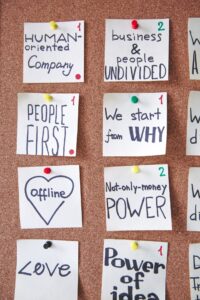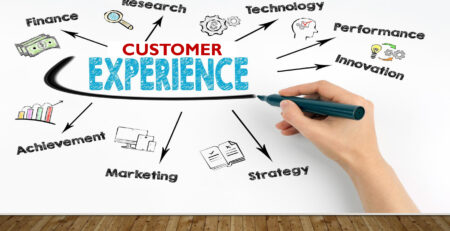Winnow’s Strategic Thinking Checklist- 9 Ways to build a Strategic Thinking Culture

Developing Strategic thinking within your firm requires a series of systemic actions that influences the culture of the firm. Mainly through Human Resources activities, achieving a strategic thinking culture may necessitate that the firm’s culture evolves from a stringent hierarchical system to a flatter, more collaborative one. Naturally this may require a paradigm shift in the thinking by those involved. Leaders of the firm may need to create space for junior members to contribute their ideas and information without worry of prosecution.
On the other hand junior staff members will need to become less mechanical at work and raise their heads to see the possibilities of improvements and growth within their area of control.
This movement towards sharing and openness among all members of the firm is paramount for the development of strategic thinking.
This was stated in the first part of this series – in the Article:
“Should I even bother? How can I make my Strategic Plan more successful”
To help you and your firm develop a culture of strategic thinking within your firm Winnow Consultants have put together a CHECKLIST of possible changes/actions you can adopt that can help in building or fortifying a Culture of Strategic Thinking:
1) Provide Comprehensive Information and Listen to Feedback
Provide an ADEQUATE amount of information for the members of the firm. This must be done to inform staff members about the strategic focus and goals of the firm. (Adequate in this instance is used because a continuous flow of information may cause members to find the information too much and burdensome.)
Firms may want to ensure that the information provided incorporates
- The goals of the organization
- The benefits of the project/activity
- How are WE going to achieve the goals/ details about activities resources and
- The importance of each member’s contribution to the success of the project
Further to this, it must be STRONGLY advised that communication systems must be put in place not only to enable employees to provide feedback but also to present their own ideas.
NEVER FORGET that each employee has their own unique view of the organization and each possesses ideas that can potentially improve their organization.
These ideas, information and Knowledge (tacit knowledge) must be viewed as treasured assets that generously contribute to the firm attaining it goals
2) Manage Data and Knowledge to ensure that it s readily available

Today the application of knowledge contributes significantly to making informed decisions. It is important for firms to view data, information and knowledge as one of its most valued assets in their quest to be more competitive. Although this is so many firm have not been actively seeking new knowledge or even harnessing the information generated by their own operations. If gathered and used well, this information will provide data that can help the firm to position itself against competition as well as reveal the many available possibilities moving forward.
But the gathering of information and knowledge is only half of this endeavor. Ensuring that it is readily available for members to use in a meaningful way is GOLD. Knowledge can be used by staff members to improve their performance and inform their ideas. The more informed and knowledgeable the members the better their ideas will be; making the firm more competitive
3) Manage and Develop Ideas

Many firms around the world are developing “IDEA DEVELOPMENT SYSTEMS” within their companies. These are created to ensure that new ideas are captured and developed for the benefit of the firm. It is stated that firms such as INSTAGRAM, FACEBOOK, 3M, APPLE and SAMSUNG all have “Idea Development Systems” that enable them to continually be competitive in the global market.
In most cases an idea development system will require submission from contributors that include:
- A comprehensive description of the idea
- The problem it will solve
- The impact that the idea will have
- Possible resources required for implementation
- How it is envisioned to be implemented
A reward system is usually used to catalyze idea submissions and development.
4) Support Potential
Training and development of staff has always been a major contributor in the creation of a culture that the company desires. It is support given to staff members by providing them with new knowledge and skills. It should be noted however that in most cases companies tend to ONLY focus on the training aspect of “Training and Development”.
But it is in the Development aspect that firms can nurture the culture that they want. Development focuses on enhancing the performance of the member through methods like coaching, mentoring, talent management and performance management. Here the firm can put formal and informal systems in place to ensure members can apply the knowledge gained within the context of the firm’s structure, systems and culture.
5) Don’t BULLY staff & become People Focused

Staff members that believe that their firm cares about their well-being and the well-being of their loved ones are usually more committed employees. The more committed a staff member the more diligently they work and the more willing they are to contribute to the continued development of the firm.
There are too many firms believe that salaries buy commitment and good performance. They are wrong in this belief and may actually be bullying their staff and losing their commitment. Continuous loss of staff mentally or altogether is absolutely detrimental to a firm’s growth.
Simple things like fostering good Employee Relations, providing services such as a day care, a gym, a homework room for the children of staff and an escort service for staff working late are all considerations that firms can take into consideration when trying to build that commitment strategic thinking staff
6) Do Communal problem solving
Communal Problem solving is a collaborative method of problem solving. It is suggested that a firm should do this type of problems solving ever so often with their members particularly when they want to get much needed perspective and information from staff. This type of decision making also create much needed buy-in by staff members.
The staff members that contribute to an idea usually own the idea and work hard to see it succeed.
In this communal problem solving it will be necessary for the firm to lead by
- Clearly defining the issue/problem to be worked on
- Comprehensively expressing the firm’s perspective and associated information
- Listening to the perspectives, ideas and information expressed by staff
- Collectively compiling possible solutions
- Conducting what if analyses
- Collectively selecting the best solution
- Thanking everyone for their contribution
7) Assess the assets
Many firms start a strategic process and do not assess the assets they have within their possession. Assets including expertise, machinery, attitude and aptitude of staff members etc must all be assessed. If this internal capacity is not assessed then all strategic plans will fail. The failure of strategic plans undermines the worth of the planning process and the retards the drive within staff member to think strategically
8) Always make SMART goals
This is a bit cliché but still worth measuring. A firm must always ensure that all goals are honestly and factually SMART.
Emphasis is place on the words “honestly” and “factually” as it enables a realistic assessment of the goals and the probability of achieving it. Once goals are constantly achieved, members feel a sense accomplishment and that in turn helps them to build trust in the leadership and help them feel part of a progressive organization. Staff members ALWAYS contribute willingly to a success story.
9) Explain what will Start Stop & Continue

Changes are essential and inevitable in every firm. The leadership within the firm must go out of their way to ensure that proper guidance and information is readily available for staff members. Clarity in a strategic review and formulation process will catalyze acceptance by staff members.
ENSURE THEY UNDERSTAND COMPLETELY.
To do this considers the following:
- Define the internal and external context of the firm- this enable members to understand the environment within which the firms operates AND understand how that environment impacts on the firm’s operations
- Start Stop and Continue– Start stop and continue is a format in which information can be structured. Staff members must be clear on what the company is going start doing, stop doing and continue doing. In this process it is imperative that the staff understands how these changes are going to affect their work lives and why it is necessary to go through this case. It may be wise to do this as often as is needed to remove all ambiguity and uncertainty from the minds of the staff member. This should be done with extreme care as change can be very stressful to some members of staff.Should you need further help with this in your organization feel free to contact us athttps://www.winnow-group.com/contact-us/






Leave a Reply